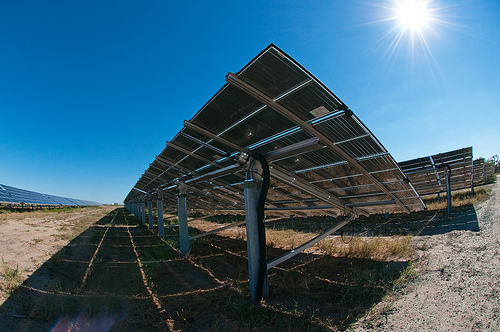Boffins at the Institute for Policy Research and Development in London have calculated just how much fossil fuel we have to burn to get to the point that we never have to burn them again.
Their paper, "A Solar Transition is Possible," argues that in a best-case scenario, "a renewable energy infrastructure could double present global power capacity to 32 terawatts (TW) in 25 years." This would be enough energy to provide what they estimate is the minimum amount of energy for every person on earth to achieve a high "human development index" — or 3.5 kilowatts of power for every one of the planet's 9 billion citizens.
If the world also engaged in an aggressive program of energy efficiency in the developed world, they argue, the goal could be much more modest — increasing the planet's supply of electricity by just five percent could bring a comparable level of prosperity.
Interestingly, it's not climate change these researchers are worried about, so much as the end of fossil fuels and oil specifically:
IPRD Executive Director, Dr. Nafeez Ahmed, said: “There is a probability of a major convergence of food, energy, water and economic crises by around 2018 without drastic change – signs of which are already appearing in the form of the Arab uprisings. We are therefore pleased to publish this new study which rigorously models the prospects for a comprehensive renewable energy transition. So far, despite the rhetoric, government efforts to support transition have been too little, too late. This report proves clearly that the way forward is for the industrialized world to eliminate its wasteful energy consumption while demilitarizing the economy and investing rapidly in new renewable technologies – and that this is really the only way to maintain well-being and prosperity while solving the challenges of peak oil and global warming.”



